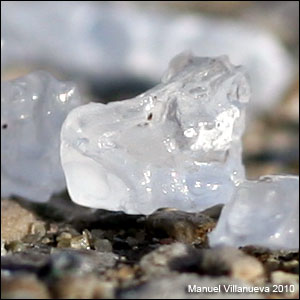
Another wintertime problem is irritation from rock salt and ice melters such as calcium chloride. The combination of exposed unprotected paws, wet sidewalks, and ice melters can cause serious injuries. If you Google calcium chloride, you’ll find out it can cause skin ulceration and necrosis under the conditions mentioned above. You certainly wouldn’t want your dog licking off all that salt from his paws either.
Yesterday’s walk was a disaster. The streets and sidewalks were all messy with melted snow along with rock salt the city spread along the street and salt my neighbors laid on their sidewalks. I had to zigzag down street avoiding as much salt as I could. Sometimes I had to pick Hoshi up and carry him over salted sidewalks.
Wintertime Paw Hazards:
- Difficulty walking from snow and ice buildup on paws.
- Frostbite from unprotected skin.
- Cracked paws from repeated exposure to icy conditions.
- Skin injury from rock salt and ice melters.
Prevention:
- Limit time outdoors.
- Avoid getting paws wet.
- Avoid salt on street and sidewalks.
- Rinse and dry paws off after walk.
- Apply skin protectants to paws such as Bag Balm or Musher’s Secret.
- Apply dog boots to protect skin.
- Inspect your pet’s paws for sores, cracks, swelling or discoloration. Are your pet’s paws painful? Are they licking or chewing their paws? If so, contact your veterinarian.
Summertime Paw Hazards:
- 1-2 degree burns from hot surfaces such as asphalt or truck bed.
Prevention:
- Be mindful of your environment. If it’s too hot for you, then it’s too hot for your pet.
- Inspect your pet’s paws for sores, swelling or redness. Are your pet’s paws painful? Are they licking or chewing their paws? If so, contact your veterinarian.
3 comments on forum